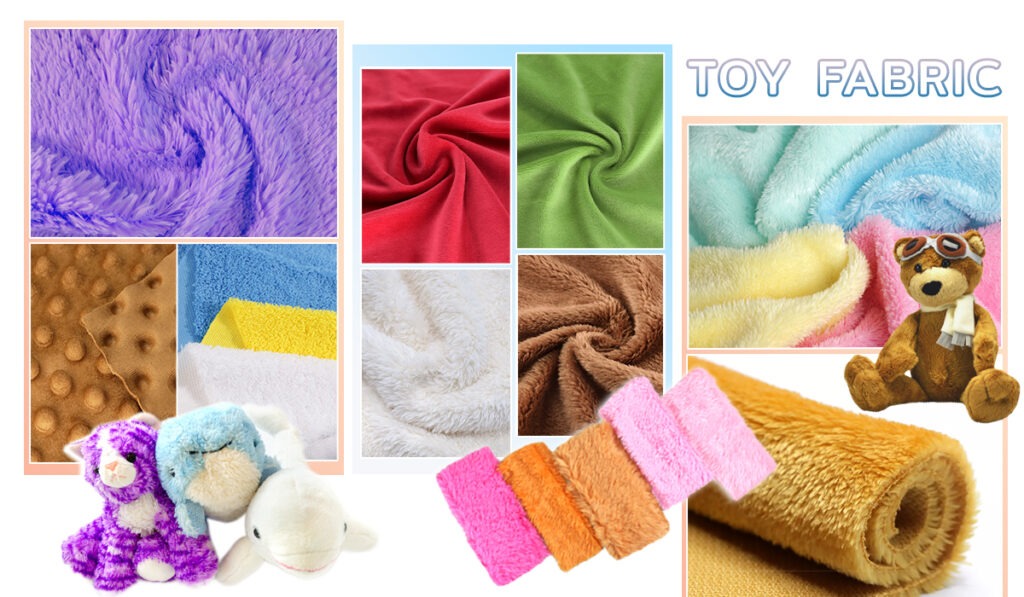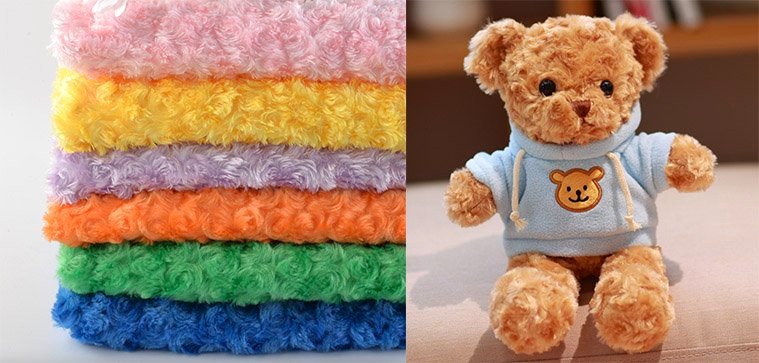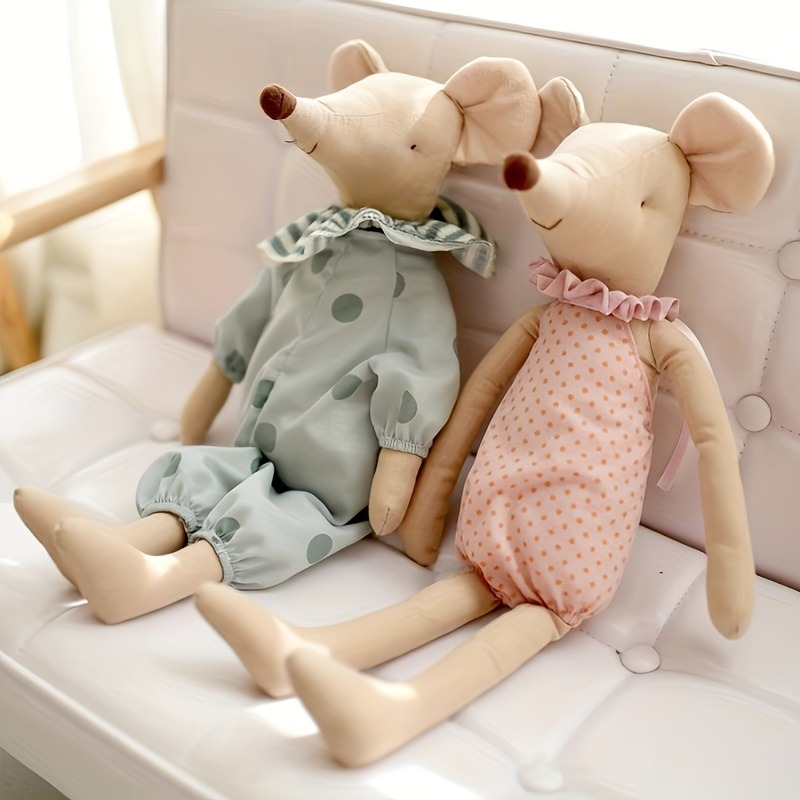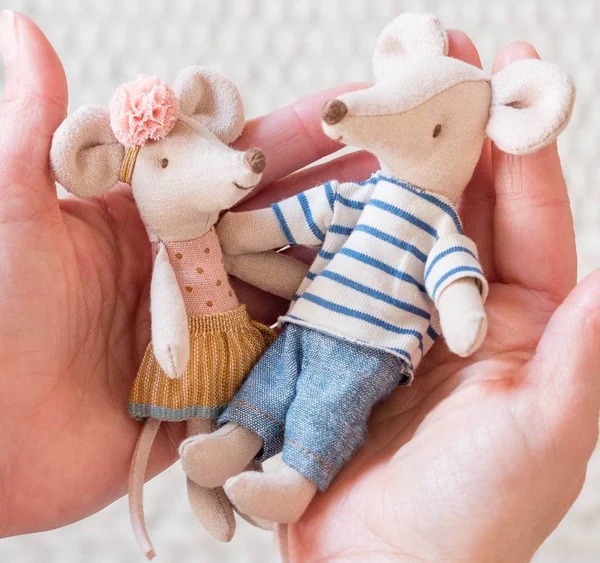When it comes to plush dolls, the material is everything. Whether you’re a parent selecting a soft toy for your child, a collector looking for the perfect addition to your display, or a manufacturer choosing the best fabrics for production, understanding the types of materials used in plush dolls is essential. The right material can determine a doll’s comfort, durability, and overall appeal.
Plush dolls are made from various materials, including soft fabrics like fleece, velvet, and cotton, as well as different types of stuffing. The quality of the material directly impacts the feel, longevity, and safety of the toy.
Let’s dive into the different materials used in plush dolls, from fabrics to stuffing, and explore how each choice affects the final product. By the end of this guide, you’ll have all the information you need to choose the perfect plush doll for any purpose.
1. What is the Material Used for Plush Dolls?

Plush dolls are typically made from soft fabrics like fleece, velvet, or cotton. These fabrics are chosen for their softness, durability, and ability to hold up over time. The stuffing inside these dolls is usually made of polyester fiberfill, although cotton or eco-friendly stuffing options are also used.
Plush dolls are primarily made from soft, durable fabrics such as fleece, cotton, or velvet, with polyester fiberfill commonly used as the stuffing. These materials provide comfort and long-lasting performance.
- Vlies: Fleece is a soft, warm fabric often used for plush toys because of its fluffy texture. It’s also easy to clean and maintain, making it a popular choice for children’s toys.
- Samt: Velvet is a luxurious fabric known for its soft, plush feel. While it’s less common in mass-produced plush dolls, it’s often used for high-end or specialty dolls.
- Baumwolle: Cotton is breathable, hypoallergenic, and soft, making it an ideal material for sensitive skin. It’s commonly used in both stuffed dolls and more eco-friendly options.
| Stoff | Key Benefits | Common Uses |
|---|---|---|
| Vlies | Weich, warm, leicht zu reinigen | Standard plush toys |
| Samt | Luxurious feel, soft texture | High-end plush dolls, limited editions |
| Baumwolle | Breathable, hypoallergenic, soft | Eco-friendly toys, children’s dolls |
2. Which Fabrics Are Best for Plush Dolls?

When choosing fabrics for plush dolls, comfort, durability, and safety are the top priorities. Cotton is often considered one of the best materials for plush dolls due to its hypoallergenic properties and soft feel. Fleece is another excellent option, especially for budget-friendly plush toys, as it’s easy to clean and maintain.
Cotton and fleece are two of the best fabrics for plush dolls, with cotton offering breathability and hypoallergenic properties, and fleece providing a soft, affordable option for mass-produced toys.
- Baumwolle: Cotton is especially suitable for babies and children because of its natural softness and hypoallergenic properties. It’s also ideal for eco-conscious consumers because it’s biodegradable and often grown organically.
- Vlies: Fleece is a great option for plush dolls that need to withstand frequent washing. It’s a synthetic fabric, which can be beneficial for durability but may not be as breathable as cotton.
- Samt: Velvet offers a premium, luxurious feel, which makes it perfect for high-end plush dolls. However, it may require more care to maintain its appearance, as it’s prone to wear over time.
3. How Does the Quality of Material Affect the Plush Doll?

The quality of materials used in plush dolls directly affects their appearance, feel, and durability. High-quality fabrics and stuffing materials ensure the doll maintains its shape, feels soft to the touch, and is built to last. Inferior materials, on the other hand, may result in a plush doll that loses its shape, feels rough, or wears down quickly.
Higher-quality fabrics and stuffing materials ensure plush dolls are soft, durable, and comfortable, while lower-quality options may result in dolls that lose shape, feel rough, or degrade faster.
- Dauerhaftigkeit: High-quality fabrics like cotton or velvet are often more durable and resistant to wear. Polyester fiberfill used in stuffing helps maintain the doll’s shape and softness over time.
- Softness and Comfort: Plush dolls made from soft materials like fleece or velvet provide a more comforting experience for children. These dolls tend to feel better against the skin and serve their purpose as cuddly companions.
- Appearance: The material also plays a key role in how realistic or appealing the doll looks. High-quality fabrics ensure that the doll retains its visual charm, while low-grade materials may cause it to appear worn out after only a few uses.
| Qualität der Materialien | Dauerhaftigkeit | Softness & Comfort | Appearance |
|---|---|---|---|
| High Quality | Long-lasting | Extremely soft | Vibrant, realistic |
| Low Quality | Prone to wear | Less soft | Fades, loses shape |
4. How Are Plush Doll Materials Chosen Based on Age Group?

The materials used for plush dolls often vary depending on the target age group. For infants, hypoallergenic fabrics like cotton are a must. These fabrics are gentle on the skin and safe for babies who may still put things in their mouths. For older children or collectors, materials like fleece or velvet may be used to create more durable or detailed dolls.
Plush dolls for infants typically use hypoallergenic materials like cotton, while older children’s or collector dolls may feature more durable fabrics like fleece or velvet.
- Infants and Toddlers: Dolls for young children must be made from hypoallergenic, non-toxic materials that are safe for their sensitive skin. Softness is key for comfort, and safety is paramount to avoid any choking hazards.
- Older Children and Collectors: Plush dolls for older children or collectors can afford to use more intricate materials like fleece or velvet. These materials are durable and visually appealing but may not be as safe for infants due to small parts or harder textures.
| Age Group | Ideal Material | Grund |
|---|---|---|
| Infants & Toddlers | Baumwolle | Hypoallergenic, soft, safe for mouthing |
| Older Children | Fleece, Velvet | Durable, visually appealing, high-end |
5. What Are the Different Types of Stuffing Materials Used in Plush Dolls?

Stuffing is a crucial aspect of plush dolls, affecting their softness, weight, and shape retention. Polyester fiberfill is the most common stuffing material used due to its lightness and ability to maintain the shape of the doll. However, there are other eco-friendly options, such as recycled polyester and natural materials like cotton or wool.
Polyester fiberfill is the most common stuffing material used in plush dolls, though eco-friendly options like recycled polyester and cotton are becoming more popular.
- Polyester-Faserfüllung: This synthetic material is lightweight and maintains its shape well over time. It’s durable and commonly used in mass-produced plush dolls.
- Recyceltes Polyester: As sustainability becomes more important to consumers, recycled polyester is being increasingly used as a stuffing material for eco-conscious plush dolls.
- Natural Fillings: Cotton and wool are sometimes used as stuffing for high-end plush dolls. These materials are natural, biodegradable, and often hypoallergenic, though they tend to be more expensive.
| Material der Füllung | Vorteile | Beeinträchtigungen |
|---|---|---|
| Polyester-Faserfüllung | Lightweight, durable | Synthetic, not biodegradable |
| Recyceltes Polyester | Eco-friendly, sustainable | Can be less soft than polyester |
| Cotton, Wool | Natural, hypoallergenic | Expensive, less durable |
6. How to Care for Plush Dolls Based on Material Type?

Proper care for plush dolls ensures their longevity and keeps them looking great. Different materials require different care methods. For example, cotton-based dolls can usually be machine washed, while velvet and fleece dolls might need to be spot cleaned to avoid damage. Understanding the material type will help you determine the best way to care for your plush dolls.
Caring for plush dolls depends on the material. Cotton dolls can often be machine washed, while velvet or fleece dolls may require spot cleaning to preserve their quality.
- Machine Washable: Plush dolls made with cotton or polyester fiberfill can usually be machine washed, though you should follow the care instructions carefully to prevent wear.
- Punktuelle Reinigung: For plush dolls made of velvet or more delicate fabrics, spot cleaning is often the best method to avoid damaging the texture or color.
- Drying and Storage: Always ensure plush dolls are thoroughly dried after washing. For those that can’t be machine dried, air drying is often the safest option.
| Material | Care Method | Wichtige Tipps |
|---|---|---|
| Cotton, Polyester | Machine washable | Use gentle cycle, air dry |
| Velvet, Fleece | Spot clean, air dry | Avoid machine drying |
Plush dolls are made from a variety of materials, each offering its own unique benefits. From hypoallergenic cotton for infants to luxurious velvet for collectors, the material choice impacts everything from softness to durability. Understanding the different materials used in plush dolls will help you choose the perfect one for your needs.
If you’re looking for customized plush dolls or unique designs, Kinwin offers tailor-made solutions to meet your specific needs. Contact us today for a personalized quote and start creating the perfect plush doll collection!




